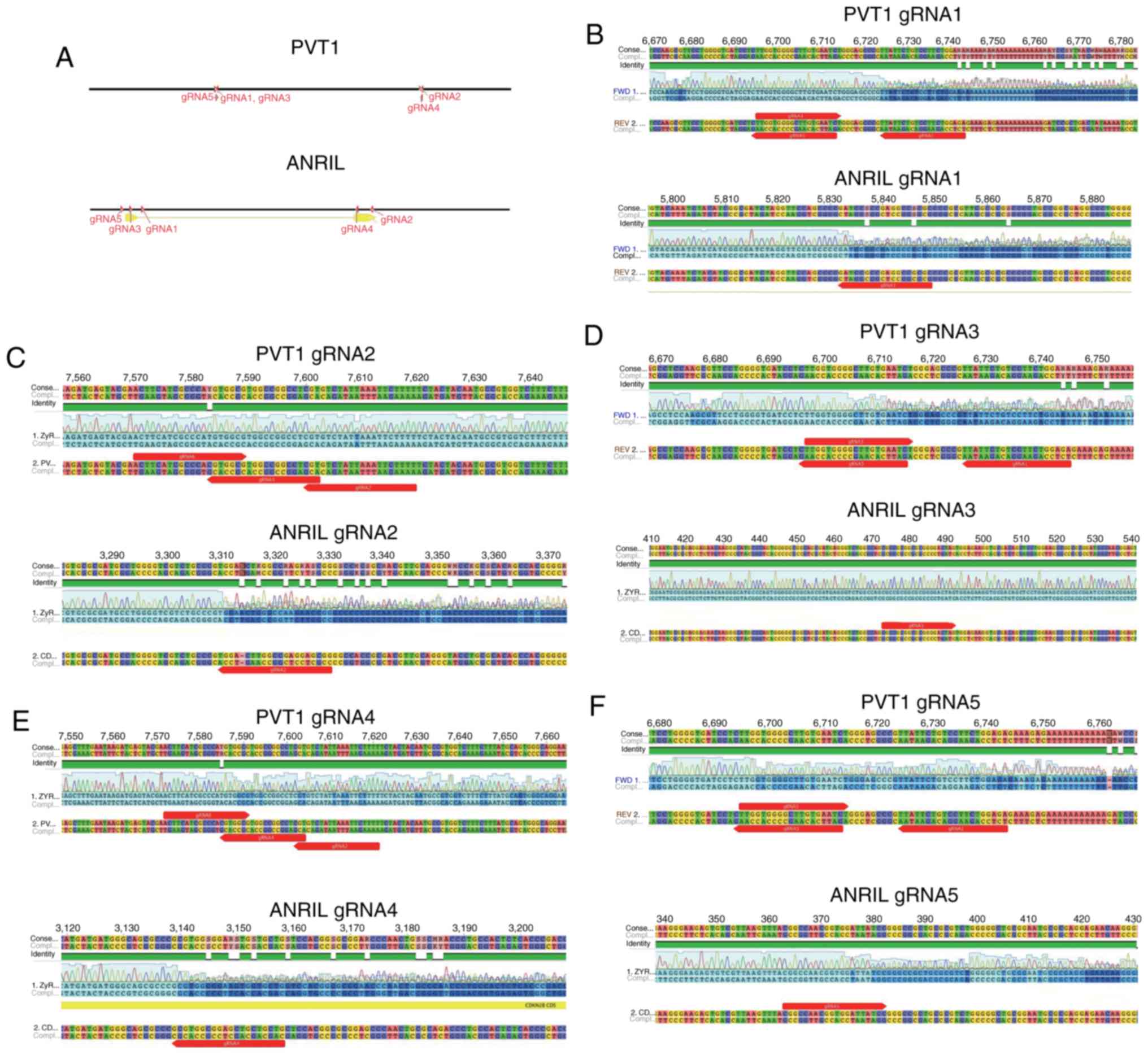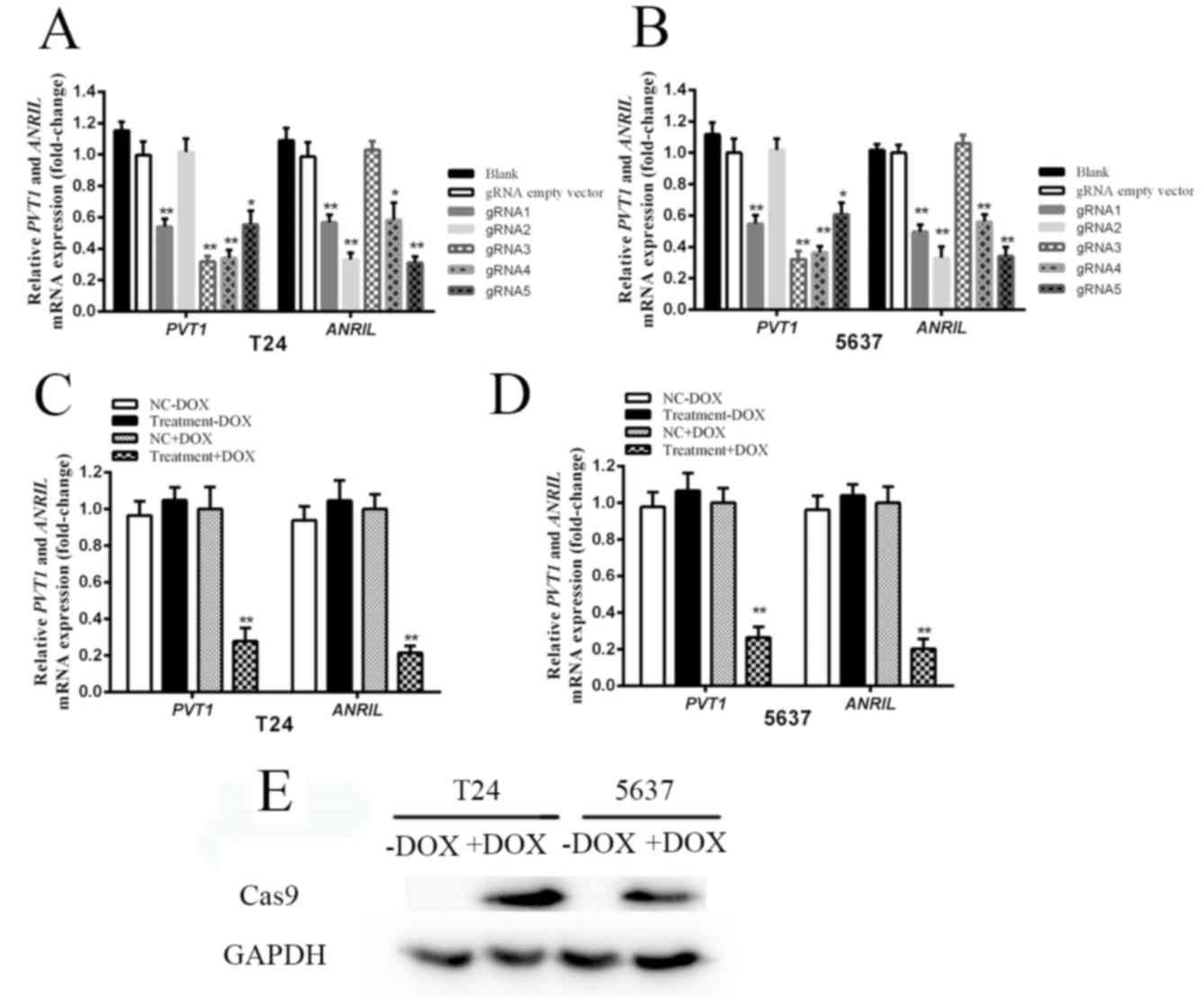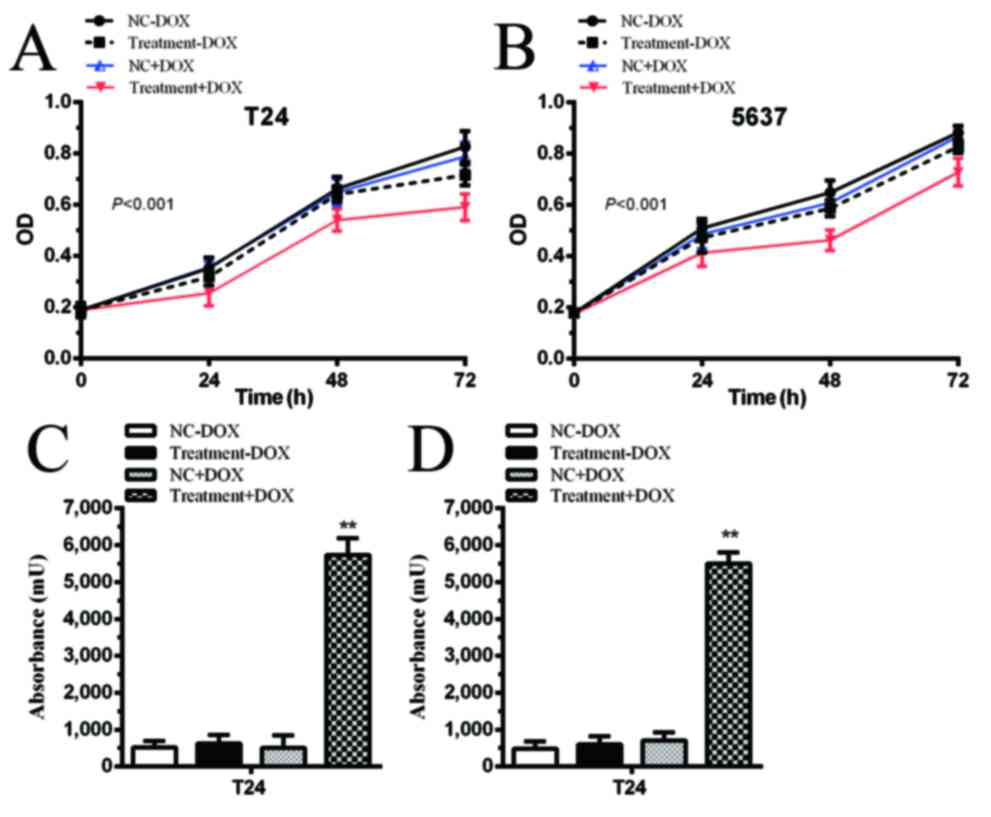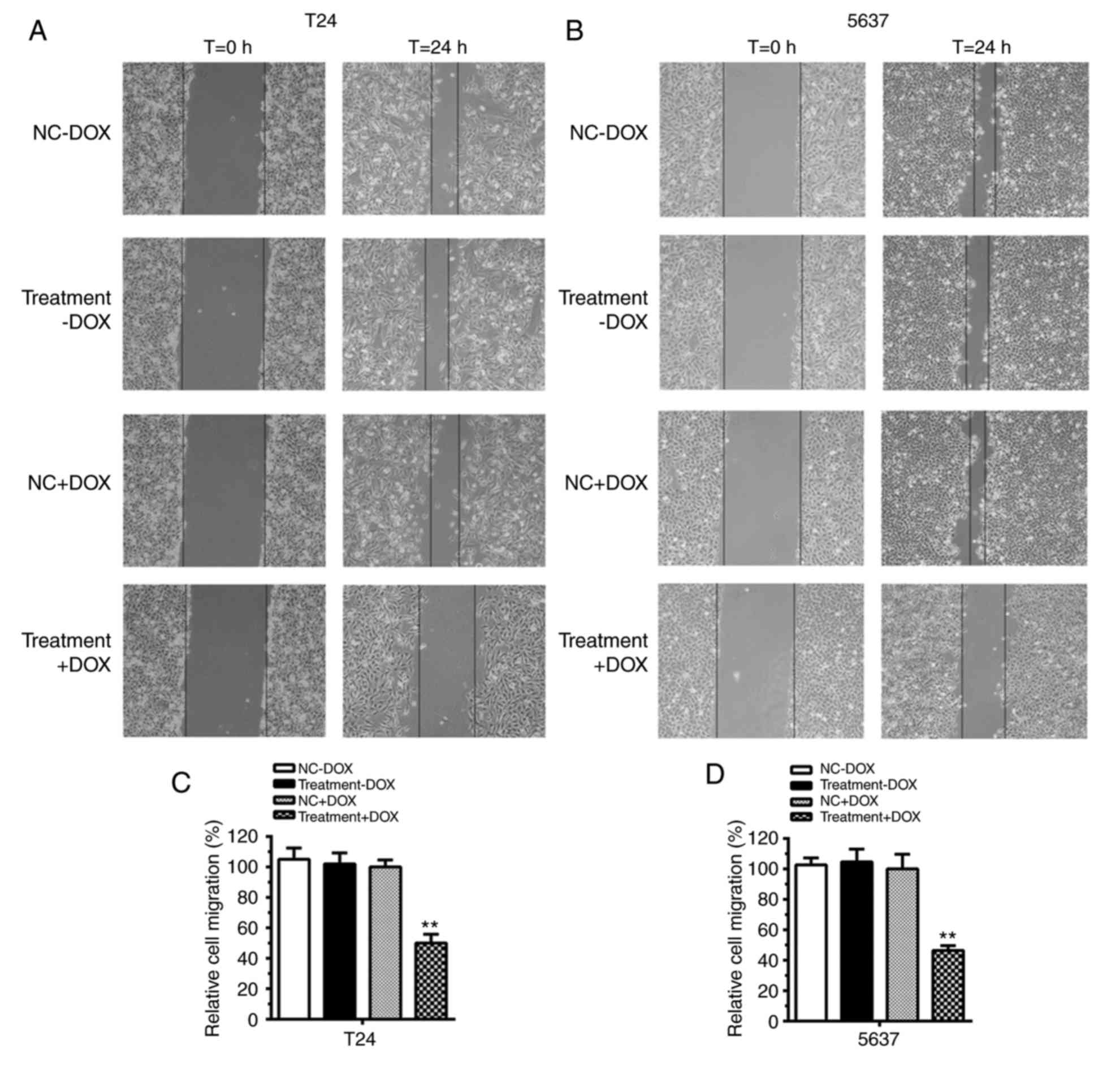|
1
|
Kaufman DS, Shipley WU and Feldman AS:
Bladder cancer. Lancet. 374:239–249. 2009. View Article : Google Scholar : PubMed/NCBI
|
|
2
|
Marta GN, Hanna SA, Gadia R, Correa SF,
Silva JL and Carvalho A: The role of radiotherapy in urinary
bladder cancer: Current status. Int Braz J Urol. 38:144–153. 2012.
View Article : Google Scholar : PubMed/NCBI
|
|
3
|
Racioppi M, Agostino DD, Totaro A, Pinto
F, Sacco E, D'Addessi A, Marangi F, Palermo G and Bassi PF: Value
of current chemotherapy and surgery in advanced and metastatic
bladder cancer. Urol Int. 88:249–258. 2012. View Article : Google Scholar : PubMed/NCBI
|
|
4
|
Amit D and Hochberg A: Development of
targeted therapy for bladder cancer mediated by a double promoter
plasmid expressing diphtheria toxin under the control of H19 and
IGF2-P4 regulatory sequences. J Transl Med. 8:1342010. View Article : Google Scholar : PubMed/NCBI
|
|
5
|
Droop J, Szarvas T, Schulz WA, Niedworok
AC, Niegisch G, Scheckenbach K and Hoffmann MJ: Diagnostic and
prognostic value of long noncoding RNAs as biomarkers in urothelial
carcinoma. PloS One. 12:e01762872017. View Article : Google Scholar : PubMed/NCBI
|
|
6
|
Berrondo C, Flax J, Kucherov V, Siebert A,
Osinski T, Rosenberg A, Fucile C, Richheimer S and Beckham CJ:
Expression of the long non-coding RNA HOTAIR correlates with
disease progression in bladder cancer and is contained in bladder
cancer patient urinary exosomes. PloS One. 11:01472362016.
View Article : Google Scholar
|
|
7
|
Heubach J, Monsior J, Deenen R, Niegisch
G, Szarvas T, Niedworok C, Schulz WA and Hoffmann MJ: The long
noncoding RNA HOTAIR has tissue and cell type-dependent effects on
HOX gene expression and phenotype of urothelial cancer cells. Mol
Cancer. 14:1082015. View Article : Google Scholar : PubMed/NCBI
|
|
8
|
Song J, Wu X, Liu F, Li M, Sun Y, Wang Y,
Wang C, Zhu K, Jia X, Wang B and Ma X: Long non-coding RNA PVT1
promotes glycolysis and tumor progression by regulating miR-497/HK2
axis in osteosarcoma. Biochem Biophys Res Commun. 490:217–224.
2017. View Article : Google Scholar : PubMed/NCBI
|
|
9
|
Zhuang C, Li J, Liu Y, Chen M, Yuan J, Fu
X, Zhan Y, Liu L, Lin J, Zhou Q, et al: Tetracycline-inducible
shRNA targeting long non-coding RNA PVT1 inhibits cell growth and
induces apoptosis in bladder cancer cells. Oncotarget.
6:41194–41203. 2015. View Article : Google Scholar : PubMed/NCBI
|
|
10
|
Li T, Meng XL and Yang WQ: Long noncoding
RNA PVT1 acts as a ‘sponge’ to inhibit microRNA-152 in gastric
cancer cells. Dig Dis Sci. 62:3021–3028. 2017. View Article : Google Scholar : PubMed/NCBI
|
|
11
|
Lillycrop K, Murray R, Cheong C, Teh AL,
Clarke-Harris R, Barton S, Costello P, Garratt E, Cook E, Titcombe
P, et al: ANRIL promoter DNA methylation: A perinatal marker for
later adiposity. EBioMedicine. 19:60–72. 2017. View Article : Google Scholar : PubMed/NCBI
|
|
12
|
Wei X, Wang C, Ma C, Sun W, Li H and Cai
Z: Retraction note: Long noncoding RNA ANRIL is activated by
hypoxia-inducible factor-1α and promotes osteosarcoma cell invasion
and suppresses cell apoptosis upon hypoxia. Cancer Cell Int.
17:602017. View Article : Google Scholar : PubMed/NCBI
|
|
13
|
Zhu H, Li X, Song Y, Zhang P, Xiao Y and
Xing Y: Long non-coding RNA ANRIL is up-regulated in bladder cancer
and regulates bladder cancer cell proliferation and apoptosis
through the intrinsic pathway. Biochem Biophys Res Commun.
467:223–228. 2015. View Article : Google Scholar : PubMed/NCBI
|
|
14
|
Clement F, Grockowiak E, Zylbersztejn F,
Fossard G, Gobert S and Maguer-Satta V: Stem cell manipulation,
gene therapy and the risk of cancer stem cell emergence. Stem Cell
Investig. 4:672017. View Article : Google Scholar : PubMed/NCBI
|
|
15
|
Zhang F, Wen Y and Guo X: CRISPR/Cas9 for
genome editing: Progress, implications and challenges. Hum Mol
Genet. 23:R40–46. 2014. View Article : Google Scholar : PubMed/NCBI
|
|
16
|
Jinek M, Chylinski K, Fonfara I, Hauer MJ,
Doudna A and Charpentier E: A programmable dual-RNA-guided DNA
endonuclease in adaptive bacterial immunity. Science. 337:816–821.
2012. View Article : Google Scholar : PubMed/NCBI
|
|
17
|
Chen X, Janssen JM, Liu J, Maggio I, 't
Jong AEJ, Mikkers HMM and Goncalves MAFV: In trans paired nicking
triggers seamless genome editing without double-stranded DNA
cutting. Nat Commun. 8:6572017. View Article : Google Scholar : PubMed/NCBI
|
|
18
|
Hruscha A, Krawitz P, Rechenberg A,
Heinrich V, Hecht J, Haass C and Schmid B: Efficient CRISPR/Cas9
genome editing with low off-target effects in zebrafish.
Development. 140:4982–4987. 2013. View Article : Google Scholar : PubMed/NCBI
|
|
19
|
Shen B, Zhang J, Wu H, Wang J, Ma J, Li Z,
Zhang X, Zhang P and Huang X: Generation of gene-modified mice via
Cas9/RNA-mediated gene targeting. Cell Res. 23:720–723. 2013.
View Article : Google Scholar : PubMed/NCBI
|
|
20
|
Chen Y, Zeng S, Hu R, Wang X, Huang W, Liu
J, Wang L, Liu G, Cao Y and Zhang Y: Using local chromatin
structure to improve CRISPR/Cas9 efficiency in zebrafish. PloS One.
12:e01825282017. View Article : Google Scholar : PubMed/NCBI
|
|
21
|
Huang X, Zhuang C, Zhuang C, Xiong T, Li Y
and Gui Y: An enhanced hTERT promoter-driven CRISPR/Cas9 system
selectively inhibits the progression of bladder cancer cells. Mol
BioSyst. 13:1713–1721. 2017. View Article : Google Scholar : PubMed/NCBI
|
|
22
|
Sanchez-Rivera FJ and Jacks T:
Applications of the CRISPR-Cas9 system in cancer biology. Nat Rev
Cancer. 15:387–395. 2015. View
Article : Google Scholar : PubMed/NCBI
|
|
23
|
Vilaboa N and Voellmy R: Regulatable gene
expression systems for gene therapy. Curr Gene Ther. 6:421–438.
2006. View Article : Google Scholar : PubMed/NCBI
|
|
24
|
Goverdhana S, Puntel M, Xiong W, Zirger
JM, Barcia C, Curtin JF, Soffer EB, Mondkar S, King GD, Hu J, et
al: Regulatable gene expression systems for gene therapy
applications: Progress and future challenges. Mol Ther. 12:189–211.
2005. View Article : Google Scholar : PubMed/NCBI
|
|
25
|
Livak KJ and Schmittgen TD: Analysis of
relative gene expression data using real-time quantitative PCR and
the 2(−Delta Delta C(T)) method. Methods. 25:402–408. 2001.
View Article : Google Scholar : PubMed/NCBI
|
|
26
|
Zhuang C, Huang X, Zhuang C, Luo X, Zhang
X, Cai Z and Gui Y: Synthetic regulatory RNAs selectively suppress
the progression of bladder cancer. J Exp Clin Cancer Res.
36:1512017. View Article : Google Scholar : PubMed/NCBI
|
|
27
|
Cong L, Ran FA, Cox D, Lin S, Barretto R,
Habib N, Hsu PD, Wu X, Jiang W, Marraffini LA and Zhang F:
Multiplex genome engineering using CRISPR/Cas systems. Science.
339:819–823. 2013. View Article : Google Scholar : PubMed/NCBI
|
|
28
|
Jinek M, East A, Cheng A, Lin S, Ma E and
Doudna J: RNA-programmed genome editing in human cells. Elife.
2:e004712013. View Article : Google Scholar : PubMed/NCBI
|
|
29
|
Qi LS, Larson MH, Gilbert LA, Doudna JA,
Weissman JS, Arkin AP and Lim WA: Repurposing CRISPR as an
RNA-guided platform for sequence-specific control of gene
expression. Cell. 152:1173–1183. 2013. View Article : Google Scholar : PubMed/NCBI
|
|
30
|
Ebina H, Misawa N, Kanemura Y and Koyanagi
Y: Harnessing the CRISPR/Cas9 system to disrupt latent HIV-1
provirus. Sci Rep. 3:25102013. View Article : Google Scholar : PubMed/NCBI
|
|
31
|
Fu Y, Foden JA, Khayter C, Maeder ML,
Reyon D, Joung JK and Sander JD: High-frequency off-target
mutagenesis induced by CRISPR-Cas nucleases in human cells. Nat
Biotechnol. 31:822–826. 2013. View
Article : Google Scholar : PubMed/NCBI
|
|
32
|
Mali P, Aach J, Stranges PB, Esvelt KM,
Moosburner M, Kosuri S, Yang L and Church GM: CAS9 transcriptional
activators for target specificity screening and paired nickases for
cooperative genome engineering. Nat Biotechnol. 31:833–838. 2013.
View Article : Google Scholar : PubMed/NCBI
|
|
33
|
Li J, Li Z, Zheng W, Li X, Wang Z, Cui Y
and Jiang X: LncRNA-ATB: An indispensable cancer-related long
noncoding RNA. Cell Prolif. 50:2017. View Article : Google Scholar
|


















